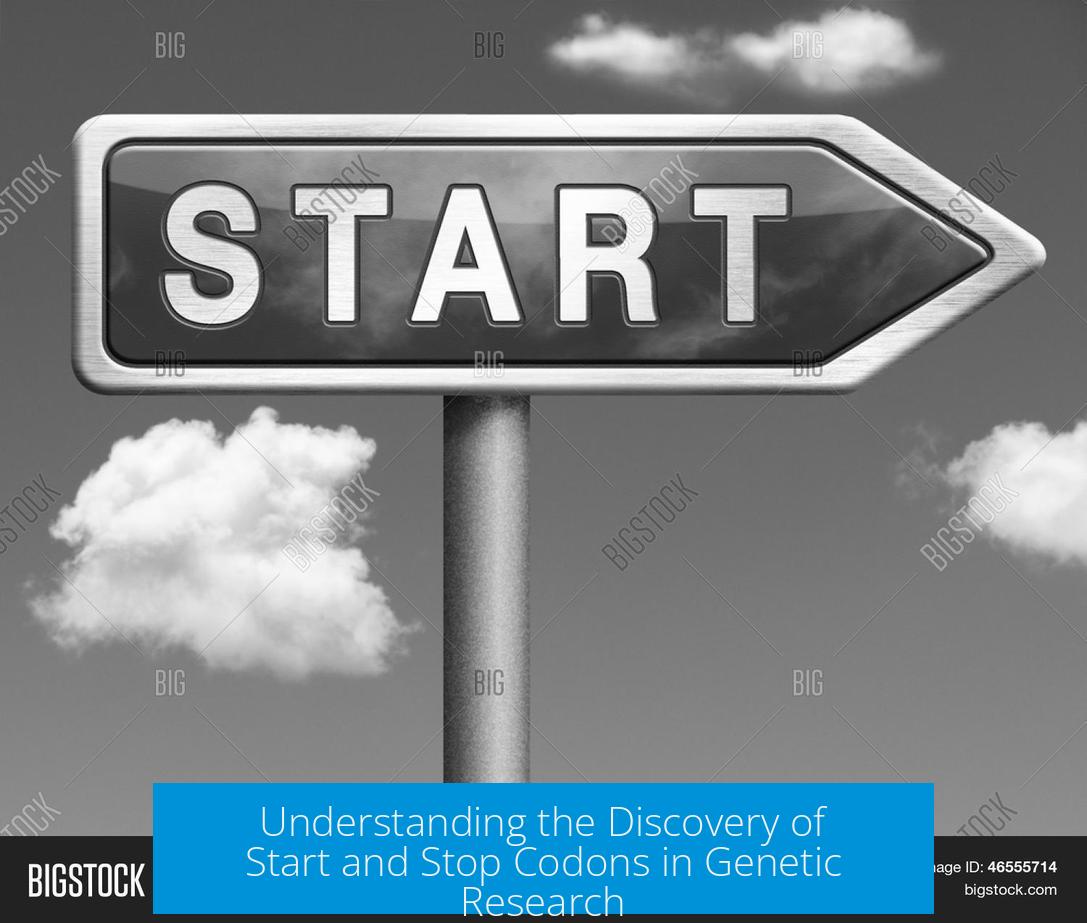How Do We Know What Start and Stop Codons Are? A First Principles Approach
We identify start and stop codons through a series of groundbreaking experiments in the 1950s and 1960s that used synthetic RNA, radioactive amino acids, and bacterial extracts to decode how proteins are synthesized from mRNA. These empirical studies revealed the triplet nature of the genetic code and the specific sequences that signal the beginning and end of translation.
1. Origin of Codon Discovery
The discovery of codons began somewhat serendipitously. Early researchers aimed to understand whether proteins were directly synthesized from DNA or from RNA. Using synthetic nucleic acids and radioactive labeling, they created controlled environments to track protein synthesis.
- They produced synthetic RNA comprised entirely of uracil (poly-U) and synthetic DNA of thymine (poly-T).
- Twenty test tubes contained all amino acids, each labeled radioactively in a different tube.
- Only the tube with synthetic RNA yielded radioactive protein, which turned out to be a string of phenylalanine, revealing the first codon (UUU) assignment.
This accidental but pivotal experiment laid the foundation for identifying specific codons by systematically testing various nucleotide combinations.
2. Decoding the Genetic Code: Empirical Experiments
Researchers then used cell-free extracts from Escherichia coli, which contained ribosomes and tRNAs, and combined them with synthetic RNA composed of repeated triplet sequences (e.g., CAUCAUCAU) to observe protein synthesis patterns.
- Under high magnesium ion concentrations, ribosomes randomly initiated translation at multiple reading frames (frameshift patterns), confirming the triplet nature of codons.
- Synthetic RNA repeats produced three different polypeptides depending on frame choice: CAU-CAU-CAU, AUC-AUC-AUC, or UCA-UCA-UCA.
- If the triplet contained certain sequences later identified as stop codons (UAA, UAG, UGA), translation stopped prematurely, producing fewer polypeptides.
These experiments demonstrated that codons are interpreted in triplets and that specific triplets serve as termination signals.
3. Identifying Start Codons
Discovering start codons proved more challenging. By lowering magnesium levels to physiological concentrations in the reaction mixture, random initiation was minimized. This condition better simulated in vivo processes.
- Only synthetic RNA repeats containing AUG or GUG triplets induced consistent polypeptide synthesis.
- E. coli can use both AUG and GUG as start codons, though AUG is predominant.
- The produced peptides aligned solely with the reading frame of these triplets, such as poly-methionine from repeated AUG sequences.
This led to the recognition that AUG functions as the primary start codon in most organisms, marking the site where ribosomes begin protein synthesis.
4. Confirming Molecular Role of Start and Stop Codons
Modern molecular biology confirms that start and stop codons are specific sequences on mRNA, interpreted directly by ribosomes during translation.
- Start codon AUG codes for methionine, the first amino acid in nearly all eukaryotic proteins.
- In prokaryotes like E. coli, GUG can also serve as a start codon.
- Stop codons UAA, UAG, and UGA do not encode amino acids but rather signal ribosomes to terminate protein synthesis.
This understanding is universal for nearly all living organisms and is a fundamental principle of gene expression.
5. Historical and Scientific Context
These discoveries resulted from inventive, carefully controlled experiments driven by molecular biology pioneers like Francis Crick, Marshall Nirenberg, and Har Gobind Khorana. Their 1968 Nobel Prize lecture and original papers provide detailed primary sources.
The methodology employed—using cell-free systems, synthetic RNAs, and radiolabeled amino acids—is notable for its simplicity and elegance, representing a golden era when critical biological mysteries were solved with basic but creative tools.
Key Takeaways
- Start and stop codons were identified through systematic experiments with synthetic RNA and bacterial extracts from the 1950s-60s.
- Poly-uracil RNA (poly-U) led to the accidental discovery of the phenylalanine codon (UUU).
- The triplet nature of genetic coding was revealed by translating repeated triplet sequences and monitoring protein synthesis under different conditions.
- Stop codons (UAA, UAG, UGA) were recognized by their ability to terminate translation prematurely.
- Start codons (primarily AUG, and GUG in some bacteria) were found by lowering magnesium levels, which restored physiological initiation fidelity.
- These empirical results laid the foundation for our current genetic code knowledge, confirmed by molecular and genetic studies in diverse organisms.





Leave a Comment